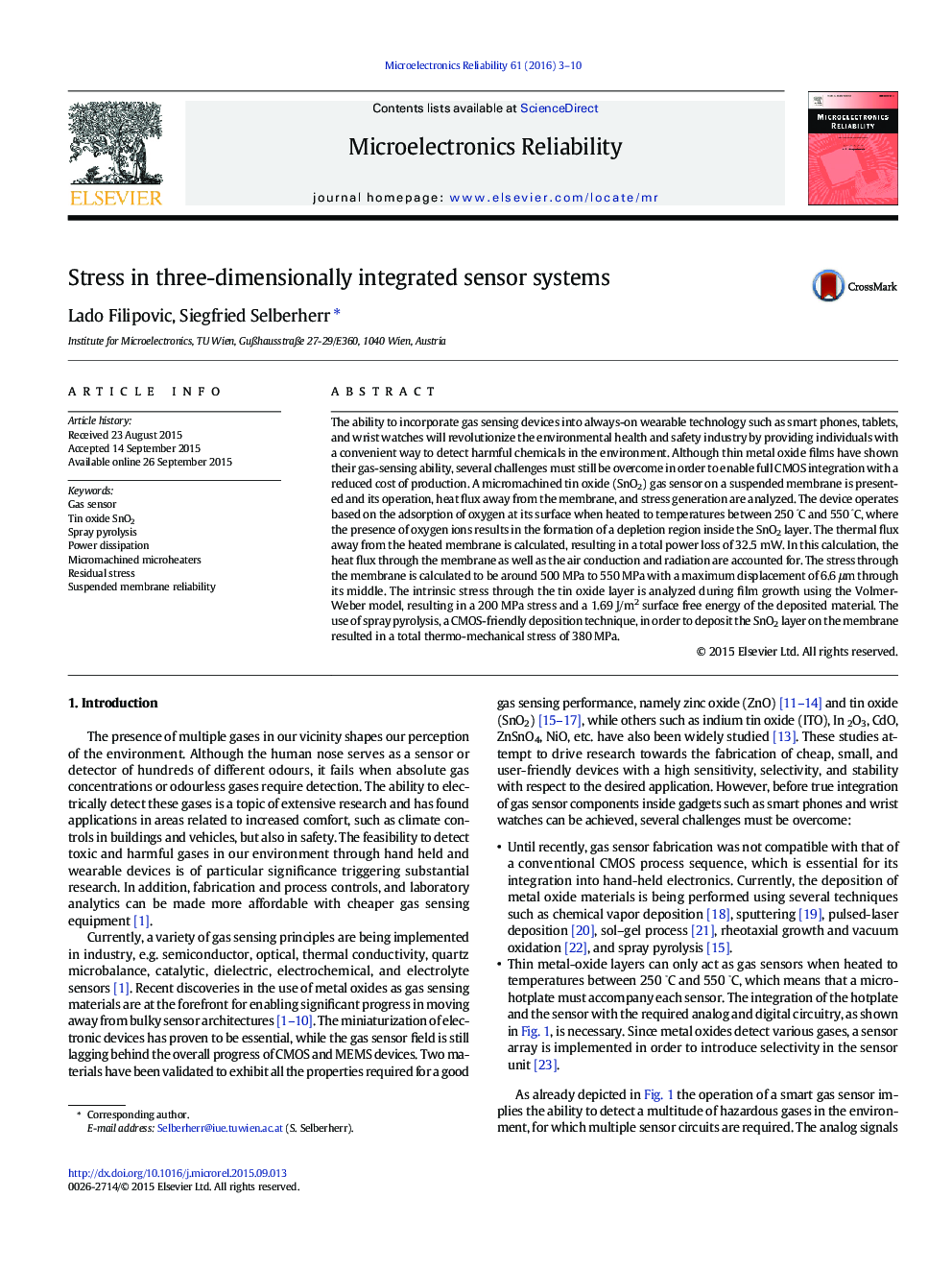| کد مقاله | کد نشریه | سال انتشار | مقاله انگلیسی | نسخه تمام متن |
|---|---|---|---|---|
| 544603 | 1450539 | 2016 | 8 صفحه PDF | دانلود رایگان |
• A sample tin oxide gas sensor geometry is generated and imported in a simulation environment.
• The operation of the sensor is analyzed and a relationship between oxygen adsorption and resistance is shown.
• Power dissipation is calculated to be 32.5 mW, taking into consideration the heat lost through the membrane and the air.
• The average simulated stress through the membrane is 435 MPa with a maximum displacement of 6.5 μm through the membrane middle.
• The intrinsic stress through the deposited tin oxide layer is analyzed for sputtered and spray deposited films.
The ability to incorporate gas sensing devices into always-on wearable technology such as smart phones, tablets, and wrist watches will revolutionize the environmental health and safety industry by providing individuals with a convenient way to detect harmful chemicals in the environment. Although thin metal oxide films have shown their gas-sensing ability, several challenges must still be overcome in order to enable full CMOS integration with a reduced cost of production. A micromachined tin oxide (SnO2) gas sensor on a suspended membrane is presented and its operation, heat flux away from the membrane, and stress generation are analyzed. The device operates based on the adsorption of oxygen at its surface when heated to temperatures between 250 ∘C and 550 ∘C, where the presence of oxygen ions results in the formation of a depletion region inside the SnO2 layer. The thermal flux away from the heated membrane is calculated, resulting in a total power loss of 32.5 mW. In this calculation, the heat flux through the membrane as well as the air conduction and radiation are accounted for. The stress through the membrane is calculated to be around 500 MPa to 550 MPa with a maximum displacement of 6.6 μm through its middle. The intrinsic stress through the tin oxide layer is analyzed during film growth using the Volmer-Weber model, resulting in a 200 MPa stress and a 1.69 J/m2 surface free energy of the deposited material. The use of spray pyrolysis, a CMOS-friendly deposition technique, in order to deposit the SnO2 layer on the membrane resulted in a total thermo-mechanical stress of 380 MPa.
Figure optionsDownload as PowerPoint slide
Journal: Microelectronics Reliability - Volume 61, June 2016, Pages 3–10
